In my previous post I wrote about how augmented reality (AR) is changing our daily activities like watching sports, studying or navigating around. This post is an overview of AR-powered e-commerce trends.
AR applications in e-commerce have been around for a while but mainly as a fun novelty. A BRP Consulting report released in 2018 indicated that 48% of consumers said they’d be more likely to buy from a retailer that provided AR experiences, but e-commerce wasn’t ready to satisfy consumer expectations. Everything changed in 2020, according to IBM’s 2020 U.S. Retail Index report, the pandemic has accelerated the shift to digital shopping by roughly five years, pushing e-commerce to utilise AR as a functional tool for sales generation rather than entertainment.
With the pandemic preventing shoppers from visiting stores, AR has brought to digital a crucial part of the in-store shopping experience: online fitting rooms in the form of a virtual ‘try-on’ feature.
The virtual fitting room is a big hit among fashion brands in 2020
Last year, AR became an essential technology for luxury, cosmetics and fashion brands. Louis Vuitton, Estée Lauder, Miu Miu, Nike and many others now offer virtual fitting rooms with the integration of new AR solutions like the 8th Wall or Lens Studio by Snap.Inc. These features have become part of their apps and websites, with some brands solely selling through social media apps like Snapchat.
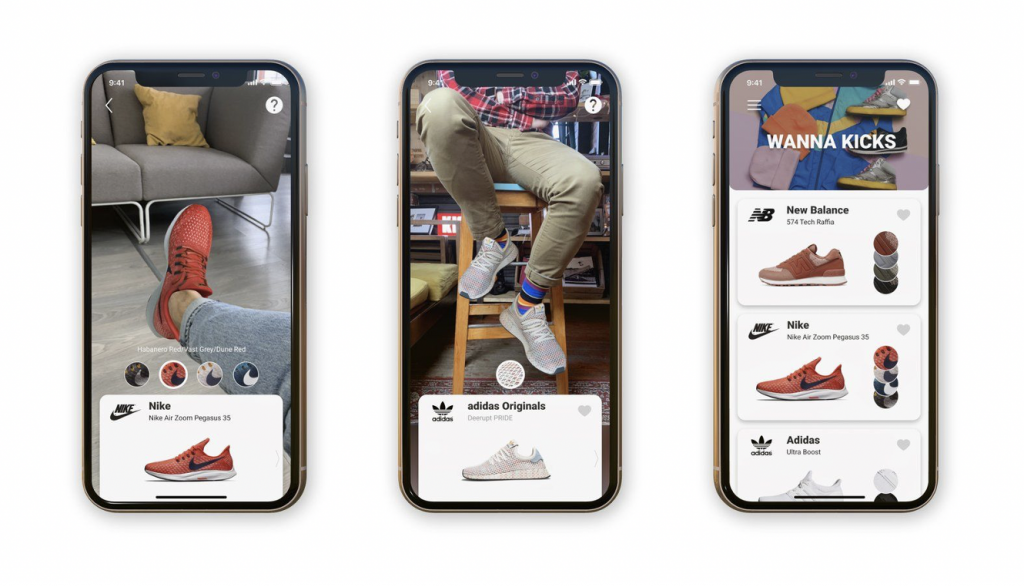
Among some of the more innovative AR collaborations this year was Gucci’s launch of a virtual shoe ‘try-on’ called Lenses through the Snapchat platform.
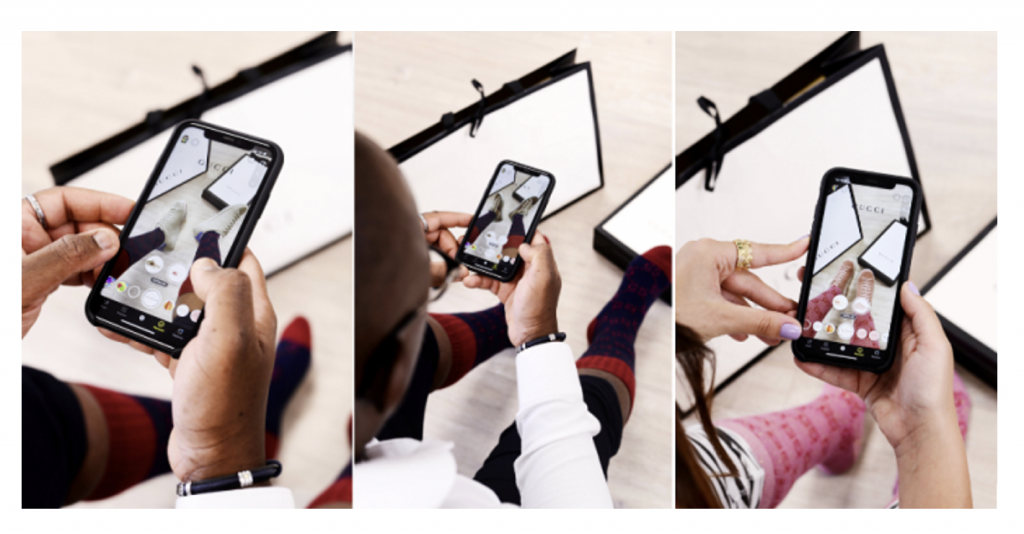
One US retailer has taken AR a step further by experimenting with your closet. The Kohl’s AR Virtual Closet allows Snapchat app users to step inside an AR dressing room, mix and match items, and make a purchase without leaving the app.
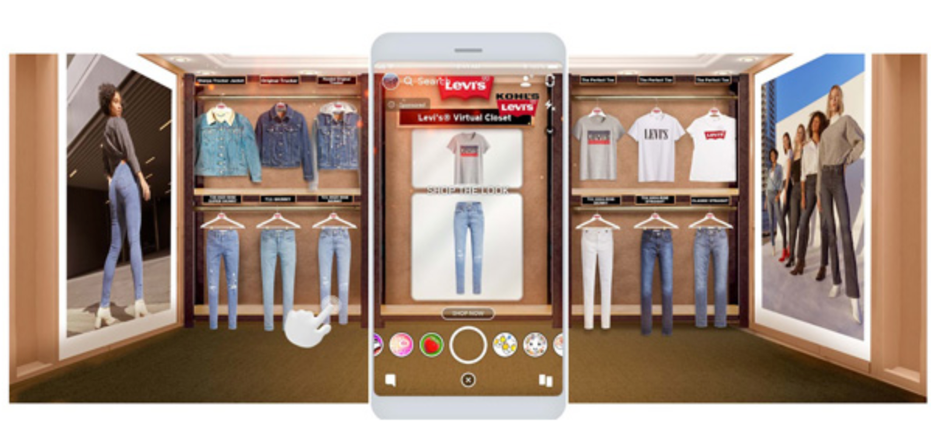
Virtual makeovers remain a hot feature
Many beauty brands now use filters to complete your look, with virtual makeovers allowing customers to try different makeup styles and trends in 3D from the comfort of their own home. Since the first release of the Sephora Virtual Artist app, a lot of brands have launched similar solutions, becoming a real trend in the beauty industry.
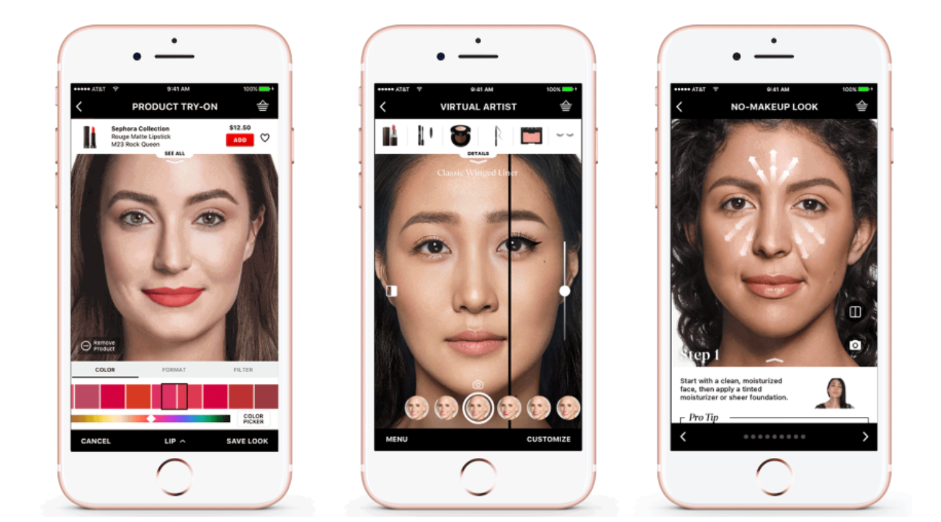
For example, L’Oréal Paris launched its first line of virtual makeup products in 2020. L’Oréal points users to the Snapchat and Instagram platforms where users can play with some filters and try a whole new modern makeup experience that only exists online.

Virtual showrooms and stores boosted in 2020
Dior’s virtual store gives visitors an opportunity to browse a collection of the brand’s soaps, lotions, etc. and buy their chosen products online without having to step foot into a physical store.

UK retail brand John Lewis has also introduced new AR features to their online services, allowing shoppers to check the scale and colour of sofas by virtually placing them in their homes before purchasing.

The Volvo Virtual Showroom utilises AR technology by allowing online customers to rotate, test out different body paint colours and hop inside vehicles to explore details of the interior. Hotspots allow customers to reveal more information on key features of the car.
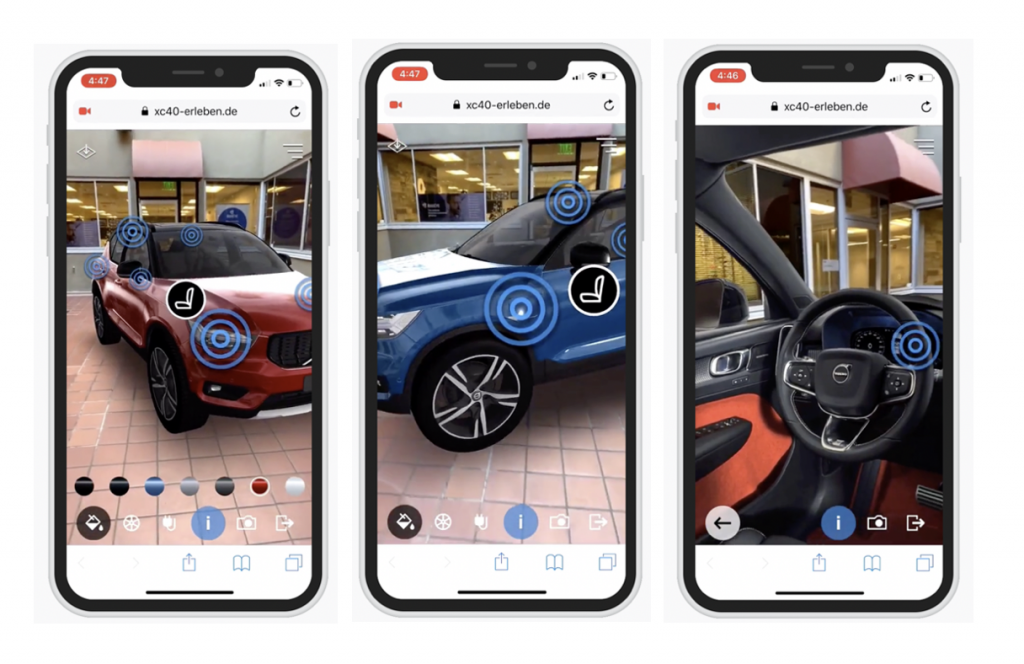
2020 has opened the door for technologies like AR to flourish, filling the void of the in-store shopping experience. Virtual try-ons, product visualisation and branded social filters not only provide a new level of customer convenience but give many brands the opportunity to gain an edge over their competition.
2021 has yet to reveal who is winning the e-commerce AR race, but we look forward to seeing what new applications will be developed in the face of this quickly evolving technology and shifts in digital shopping trends.
Could you be using AR to improve your customer experience?
We’d love to help you find out! We have all the tools to help you research, test and design experiences that work. If you would like to discuss how we can help you, get in touch.




